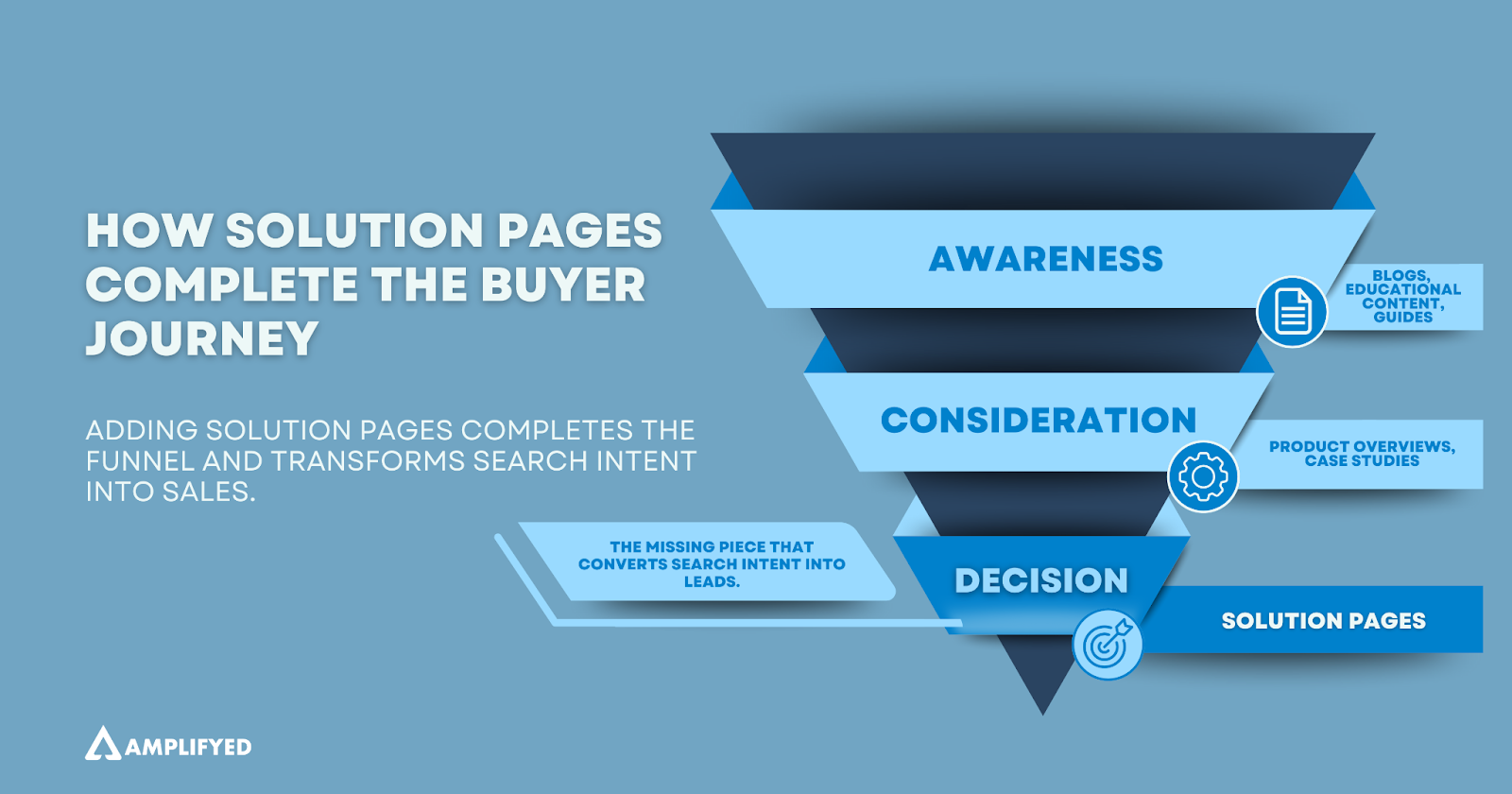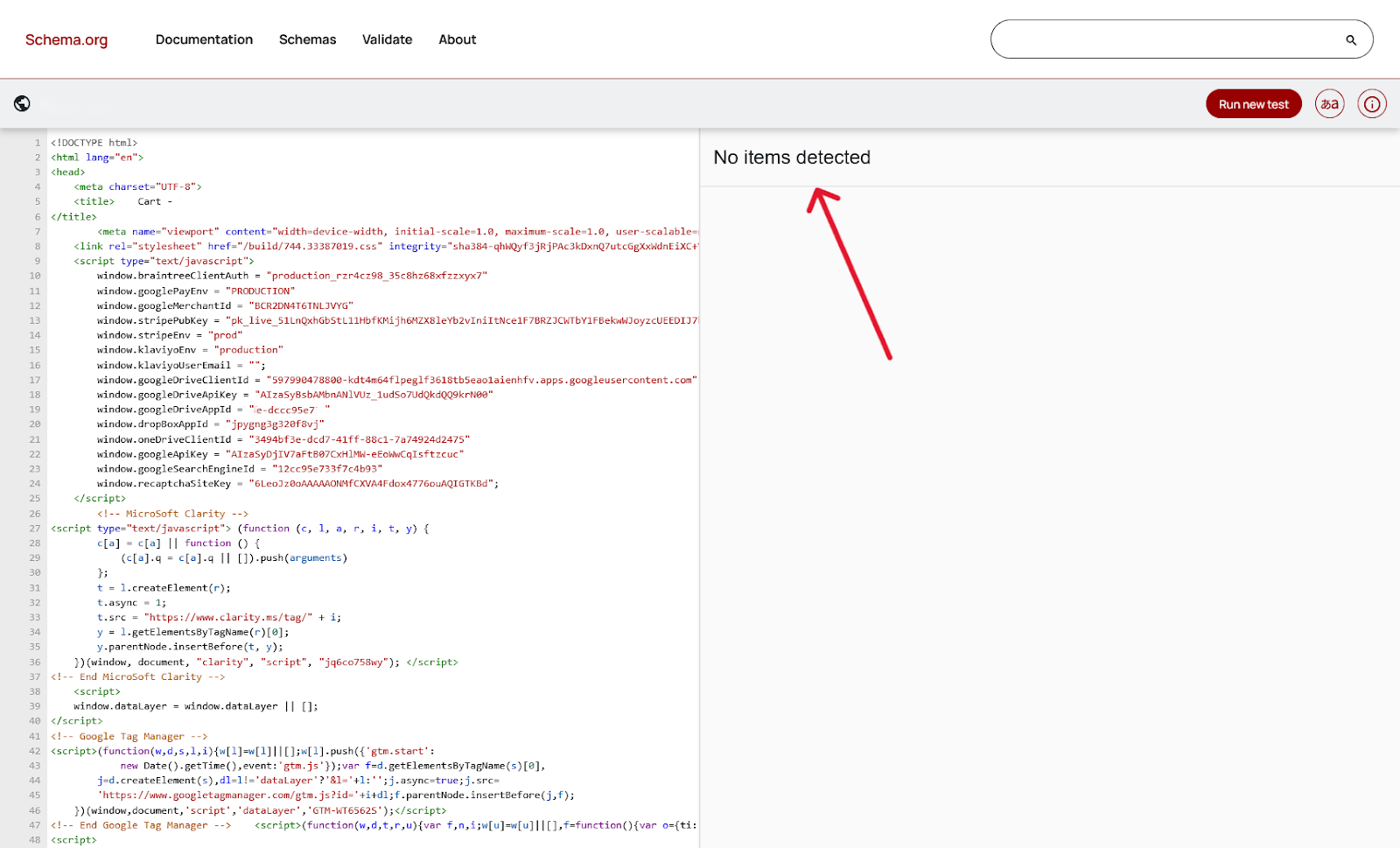One cybersecurity firm client had been publishing blogs since 2017. On the surface, that looked promising: years of steady updates and a large resource library. But beneath the surface, the cracks showed:
- Dozens of posts rehashed the same few topics.
- Some articles were just 200 words long, with a single screenshot.
- Multiple pages competed for identical keywords, such as “Active Directory hardening” or “zero trust network security.”
The abundance of content on a single topic was actually a liability, fragmenting SEO value instead of building it.
Problem: keyword cannibalization
How to check if you have this problem: There are multiple pages ranking for a keyword but none of them are breaking into the top results. Lots of middling page rankings means you’re fighting against yourself (cannibalizing), leaving competitors to dominate.

Solution
We conducted a full content audit, mapping every blog URL to its target keywords. Overlapping topics were flagged for either merging into one fantastic piece of content or pruning.
- Merged short or repetitive posts into long-form, authoritative guides.
- Redirected outdated or redundant URLs to their new consolidated pages using 301 redirects to preserve link equity.
- Mapped keywords so each term was assigned to only one page, eliminating internal competition.
- Applied canonical tags in cases where merging wasn’t practical, to signal the primary version of similar content.
The Result
Rankings improved within weeks. Instead of seven competing pages stuck on page two, the client had one strong, unified page climbing steadily.
The site began to project authority rather than fragmentation. Buyers found it easier to locate accurate information, and Google rewarded the site’s clearer topical focus. By consolidating content, the firm turned overload into clarity, building a true SEO asset instead of a chaotic library.
SEO Fix #2: Redirects That Expire
A global security provider had spent years building backlinks from trusted sources, until a technical misstep undermined their SEO gains:
- Their 301 redirects were configured with 12-month expiration dates, causing valuable links to suddenly point to 404s.
- This mistake triggered widespread “link rot”, erasing years of accumulated SEO authority.
Problem: Redirects with expiration dates.
They’re not alone. Ahrefs found that 66.5% of backlinks eventually rot, becoming dead ends when pages move or change. Without permanent redirects, valuable authority simply evaporates, even for established brands.
How to Check if You Have This Problem: Run a backlink audit in tools like Ahrefs or Screaming Frog. If you find redirected URLs returning 404 errors after a year, or inconsistent redirect chains, your site might be losing link authority.
Solution:
- Converted all time-limited redirects into permanent 301s.
- Eliminated expiration dates from redirect logic.
- Implemented ongoing monitoring to detect broken links and redirect loops early.
- Created a redirect management process to handle every future URL change correctly and preserve link equity.
The Result
Within weeks, backlink equity began to flow again. Rankings rebounded, organic traffic stabilized, and domain authority metrics recovered.
By securing redirects permanently, the provider protected years of earned authority, ensuring every backlink continued to build long-term SEO value.
SEO Fix #3: Heading Structures in Disarray
Another cybersecurity company had strong, well-written content but struggled to maintain stable rankings:
- Some pages lacked H1 tags entirely.
- Others contained multiple H1s, confusing both users and search engines.
- In one extreme case, the only H1 was hidden in the footer.
Without a clear heading hierarchy, search engines couldn’t interpret the content correctly — and users couldn’t scan or navigate pages easily.
Problem: Improper heading structures confuse both users and search engines.

How to Check if You Have This Problem: View your page source or inspect with SEO tools like Screaming Frog. If you see multiple H1s, missing H1s, or headings used purely for styling instead of structure, your content hierarchy likely needs repair.
Solution:
- Established a consistent heading framework across all pages.
- Ensured each page has one keyword-focused H1 that defines its topic.
- Organized content under logical H2s and H3s for clarity.
- Removed improper heading tags from templates (e.g., no H1s in footers).
- Trained content authors to apply proper heading tags instead of visual formatting.
The Result
Once headings were properly structured, rankings became more stable and predictable. Google could clearly interpret page topics, and users found content easier to scan and navigate.
The improvement not only boosted SEO performance but also enhanced readability and brand professionalism.
SEO Fix #4: Gaps in High-Intent Landing Pages
Many cybersecurity vendors had strong blogs and product pages, but nothing built for buyers ready to act.
- Their content targeted top- and mid-funnel keywords like “What is endpoint security?”
- But they lacked dedicated landing pages for high-intent, bottom-of-funnel searches such as:
- “Endpoint security solutions”
- “Cloud access control provider”
- “Endpoint security solutions”
- As a result, they were invisible to ready-to-convert buyers, while competitors with the right pages captured all the clicks and leads.
Problem: Missing high-intent landing pages.
How to Check if You Have This Problem: Search Google for your product or service using commercial-intent phrases like “solutions,” “platform,” or “provider.” If your brand doesn’t appear on page one (but your blogs or generic product pages do), you likely have a content gap at the bottom of the funnel.
Solution
- Built out a suite of SEO-optimized solution pages with clean, consistent URLs (e.g., /solutions/endpoint-security, /solutions/cloud-access-control).
- Included keyword-rich H1s and metadata aligned with buyer search intent.
- Developed in-depth content describing key features, benefits, and pain points.
- Added internal links from the homepage, navigation, and related blogs to funnel authority to these pages.
- Applied Product or Service schema for enhanced visibility in search results.
The Result
By creating focused, high-intent landing pages, the vendor began attracting buyers further along in the decision process, users actively comparing providers and seeking solutions.
This shift connected buyer-ready keywords directly to conversion-optimized pages, strengthening both organic visibility and lead quality.
SEO Fix #5: Shallow Content and Weak Topical Depth
Adding solution pages is critical, but many cybersecurity firms stop there, leaving major authority gaps unaddressed.
- Their websites focus narrowly on product features, not the broader context their audience cares about.
- They overlook educational and industry-focused topics that build trust and attract early-funnel visitors.
- The result: limited visibility beyond branded or product searches, and low perceived authority in Google’s eyes.
Problem: A lack of topical depth.
How to Check if You Have This Problem: Look at your blog or resource library. If nearly every post centers on your product, features, or announcements, and few explain why those products matter or how they solve real-world problems, your content likely lacks topical depth.

Solution
- Developed top- and mid-funnel content marketing calendars focused on educational, high-value topics adjacent to core products.
- Produced guides, explainers, and checklists on major frameworks and regulations (e.g., CMMC, GDPR).
- Created industry-specific articles addressing challenges in key verticals like defense, healthcare, and finance.
- Wrote comparison and trend-based posts to help buyers evaluate options and stay informed.
- Increased publishing frequency from one post per month to two or three per week, signaling freshness and authority to search engines.

The Result
As new top- and mid-funnel content rolled out, visibility expanded across the buying journey. Rankings improved for competitive, non-branded keywords, and the client began capturing earlier-stage traffic that had previously gone to competitors.
The takeaway: consistent, authoritative content drives exponential growth. HubSpot data backs this up, “companies publishing 11+ blog posts per month see more than three times the traffic of those posting once or twice.”
By expanding their content beyond products and consistently addressing audience questions, the client became a trusted, go-to resource, both for buyers and for Google’s algorithms.
SEO Fix #6: Missing Structured Data (Schema Markup)
One cybersecurity provider had built a technically sound, content-rich website, but overlooked a foundational SEO element: structured data.
- No schema markup existed anywhere on the site.
- As a result, search engines couldn’t fully interpret the meaning or relationships between pages.
- The company missed out on rich results and AI-driven visibility, limiting exposure in modern search experiences.
In today’s era of AI-enhanced search, schema isn’t optional, it’s the structured information that helps Google, Bing, and AI systems accurately understand and surface your content.
Problem: Missing or incomplete schema markup.
How to Check if You Have This Problem: Run your domain through Google’s Rich Results Test or Schema.org validator. If your pages don’t show any recognized schema types (e.g., Organization, Service, FAQPage), you’re missing a key opportunity to clarify your content for search engines.

Solution
- Implemented core schema markup across the site to give crawlers a clear “cheat sheet” of each page’s purpose.
- Automated essential schema (e.g., Breadcrumb and WebPage) via CMS plugins.
- Added custom JSON-LD for service pages using Product or Service schema types.
- Deployed FAQPage schema for pages with structured Q&A sections.
- Validated all markup through Schema.org and Google’s Rich Results Tester to ensure compliance and eligibility.
The Result
Shortly after implementation, pages began appearing with enhanced rich snippets, improving click-through rates and visibility. The added structure also improved how AI-driven systems interpreted the site’s content.
As Google Developers note, “structured data helps search engines understand the content on a page and enables special search result features and enhancements.”
With schema now in place, the site is future-ready, built to perform not only in traditional SERPs but also within the structured, machine-readable frameworks powering generative AI search.
The Bigger Picture
Looking across these case studies, a clear pattern emerges:
- Content issues: keyword cannibalization, thin coverage, bloated site structures.
- Technical SEO issues: expiring redirects, messy heading structures, missing schema.
- Strategic gaps: absent solution pages for high-intent searches.
Individually, these problems chip away at visibility. Together, they compound, making even the most sophisticated cybersecurity firms nearly invisible online.
But the reverse is just as powerful:
When these problems are systematically solved, growth accelerates. Companies rebound from broken redirects, climb into the top 10 for critical keywords, and grow impressions by 1,000% or more.
Turn Cybersecurity SEO Issues Into Wins
Every SEO challenge is an opportunity. And when cybersecurity companies get the fundamentals right, they don’t just rank higher, they win the right clients.
By addressing cannibalized content, expired redirects, broken headings, missing solution pages, shallow coverage, and absent schema, cybersecurity firms can transform SEO from a liability into a high performing growth channel.
Overcome Cybersecurity SEO Challenges with Amplifyed
Cybersecurity companies face unique SEO obstacles, from complex technical issues to intense competition for high-value keywords. At Amplifyed, SEO isn’t “also” what we do. It is all we do.
We partner with cybersecurity companies to drive more traffic from Google and AI search. Our strategies are built for scale, combining deep industry expertise with proven strategies that turn organic search into a reliable source of leads.
When you need more than an agency, choose a partner who understands your challenges and knows how to get results. Work with Amplifyed and turn your SEO into a true growth engine.





